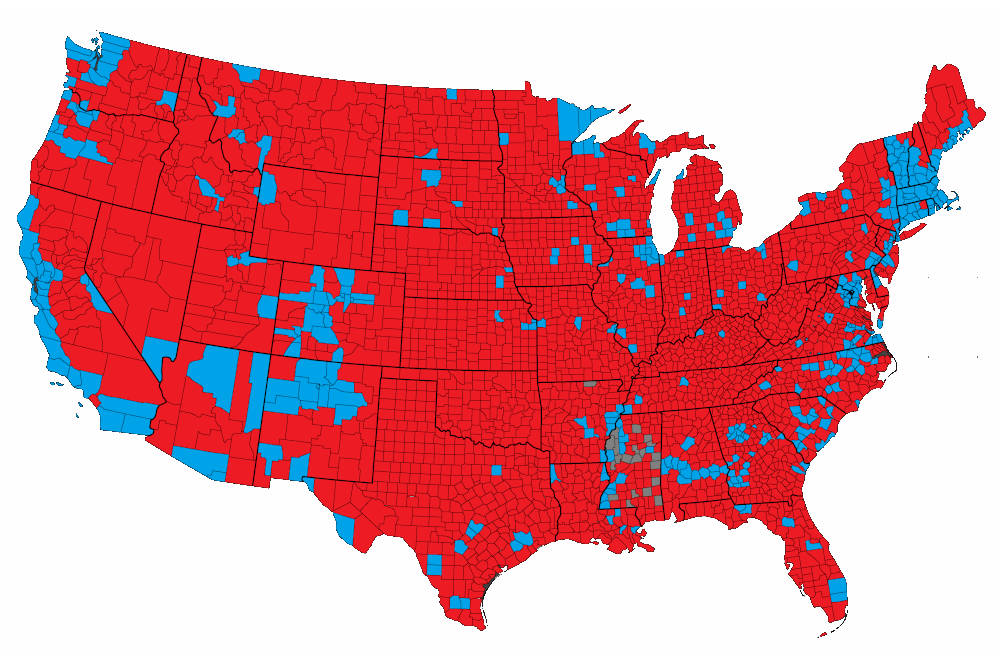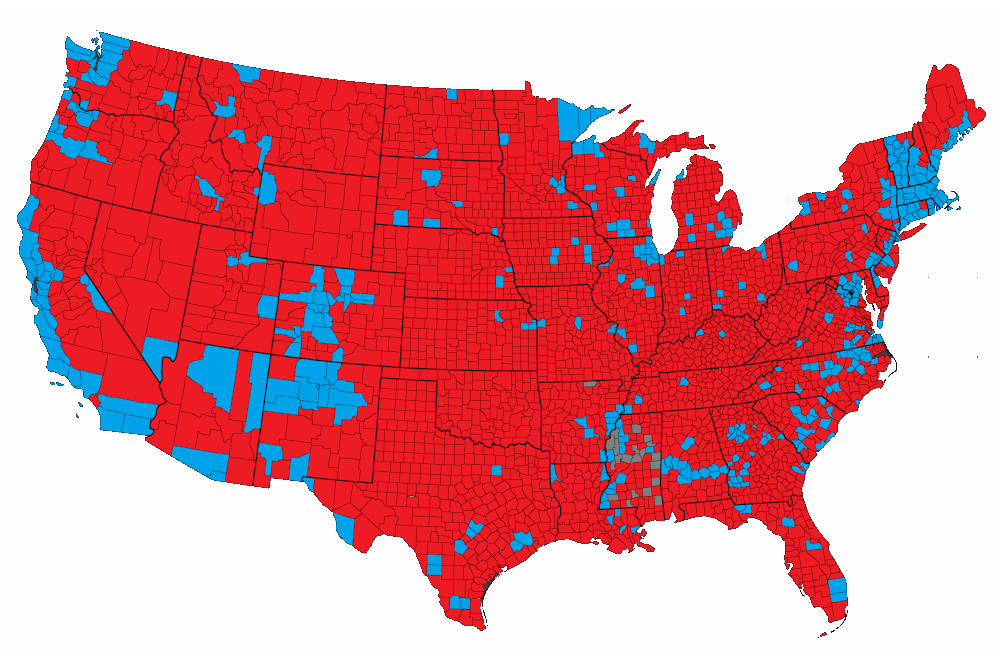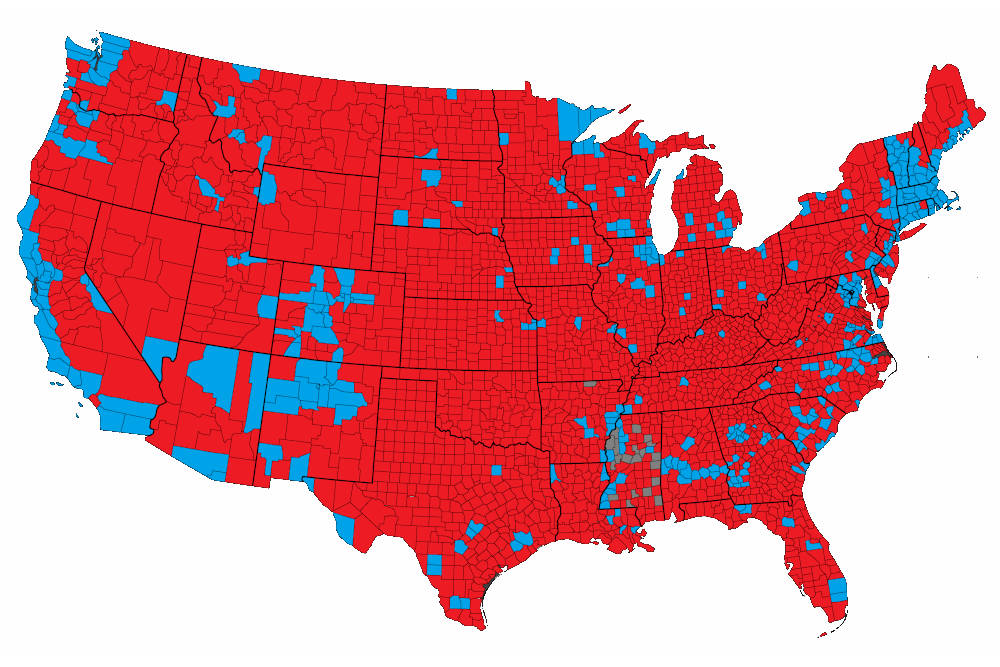
America is witnessing a striking economic trend: red, conservative-led states are outperforming blue states in job creation, business growth, and overall economic prosperity. While national headlines focus on federal policies and Washington gridlock, the real engines of growth are happening at the state level.
By fostering pro-business environments, lower taxes, and workforce-friendly policies, red states are attracting companies, entrepreneurs, and families alike. This article explores why conservative governance drives economic success and what it means for everyday Americans.
Panaprium est indépendant et pris en charge par les lecteurs. Si vous achetez quelque chose via notre lien, nous pouvons gagner une commission. Si vous le pouvez, veuillez nous soutenir sur une base mensuelle. La mise en place prend moins d'une minute et vous aurez un impact important chaque mois. Merci!
The Red-State Advantage
Red states consistently outperform blue states in key economic metrics:
-
Job growth: Conservative-led states are adding more jobs per capita than their blue counterparts.
-
Business formation: Lower taxes and reduced regulation encourage startups and small business expansion.
-
Population growth: Affordable living and strong job markets attract new residents.
-
Income growth: Residents enjoy higher disposable income due to lower state taxes.
This isn’t coincidence—it’s the result of policies that prioritize freedom, growth, and fiscal responsibility.
Tax Policy Drives Economic Growth
One of the clearest differentiators between red and blue states is tax policy.
1. Lower Income Taxes
States like Florida, Texas, and Tennessee allow residents to keep more of their earnings, which increases spending power and supports local businesses.
2. Reduced Corporate Taxes
By minimizing corporate tax burdens, red states encourage companies to invest, expand, and hire more workers.
3. Predictable Fiscal Policy
Balanced budgets and controlled spending reduce uncertainty for businesses, creating a stable environment where long-term investment decisions are more secure.
Regulatory Environment and Business-Friendly Policies
Red states also attract economic activity by limiting bureaucratic red tape:
-
Streamlined permitting processes allow businesses to launch and expand quickly.
-
Reduced occupational licensing requirements open opportunities for skilled workers and entrepreneurs.
-
Flexible labor laws enable employers to adapt to market demands efficiently.
This pro-business approach translates into faster job creation, increased innovation, and a more dynamic economy.
Education and Workforce Development
A strong workforce underpins economic growth. Red states have focused on:
-
Vocational and technical training programs that align with industry needs.
-
School choice and charter school initiatives to improve educational outcomes.
-
Workforce incentives for in-demand sectors, including manufacturing, energy, and technology.
By cultivating skilled workers, red states ensure that companies have access to the talent they need to thrive, creating more opportunities for residents.
Population Growth Fuels the Economy
High taxes and high costs drive many Americans away from blue states, while red states attract families and professionals seeking economic opportunity.
-
Texas, Florida, and Arizona continue to see significant in-migration.
-
Population growth boosts demand for housing, services, and retail, creating new jobs and stimulating local economies.
-
The influx of entrepreneurs and skilled workers further strengthens regional innovation and business development.
In short, red states are creating a virtuous cycle of growth that benefits both businesses and residents.
Small Business Success in Red States
Small businesses are the backbone of the American economy, and red states offer the ideal environment for their growth:
-
Lower startup costs and fewer regulations reduce barriers to entry.
-
Tax incentives and grants encourage expansion and hiring.
-
Access to growing markets fueled by population inflows and higher disposable incomes.
These factors make red states fertile ground for entrepreneurs, which in turn drives local job creation and strengthens communities.
Contrasting Blue-State Challenges
Many blue states face economic headwinds that hinder job creation and growth:
-
High taxes reduce disposable income and discourage business investment.
-
Strict regulations increase operating costs for businesses.
-
High cost of living pushes workers and entrepreneurs to seek opportunities elsewhere.
-
Union-heavy labor policies can create inflexible work environments.
The result is slower economic growth, stagnant wages, and higher out-migration—problems that conservative policies in red states aim to avoid.
Energy Policy and Economic Advantage
Red states often leverage domestic energy production to stimulate growth:
-
Oil, natural gas, and coal industries create thousands of high-paying jobs.
-
Energy independence reduces costs for businesses and households.
-
Energy-friendly policies attract investment in manufacturing and logistics sectors.
By supporting energy production while balancing environmental concerns, red states create both employment opportunities and economic stability.
Housing Affordability and Cost of Living
Affordable living is another reason red states are thriving economically:
-
Lower property taxes make homeownership accessible.
-
Moderate housing costs attract families and skilled workers.
-
Planned community development ensures infrastructure keeps pace with population growth.
When residents spend less on housing, more money circulates in local economies, fueling small businesses and services.
Conservative Fiscal Responsibility Promotes Growth
At the heart of red-state economic success is conservative fiscal management:
-
Balanced budgets reduce debt and financial uncertainty.
-
Spending focuses on infrastructure, education, and core public services.
-
Excessive borrowing and unfunded programs are avoided, protecting taxpayers and investors alike.
This fiscal discipline creates a stable environment for businesses and families to flourish.
The Cultural Component
Red states also foster economic growth through values-aligned policies:
-
Emphasis on personal responsibility and entrepreneurship encourages residents to innovate and invest in their futures.
-
Communities support family stability, which strengthens local economies by creating reliable workforces and consumers.
-
Conservative governance prioritizes freedom and opportunity over bureaucracy, enabling economic dynamism.
This combination of policy, culture, and opportunity sets red states apart as engines of prosperity.
Conclusion
Red states are leading the nation in job creation and economic growth due to conservative policies that prioritize fiscal responsibility, low taxes, regulatory efficiency, and workforce development.
By fostering an environment where businesses can thrive, families can prosper, and workers can access meaningful opportunities, conservative-led states offer a clear blueprint for sustainable economic success.
While federal policies and blue-state approaches often create burdensome taxation, high costs, and slower growth, red-state strategies prove that smart governance, economic freedom, and personal responsibility work together to build stronger communities and robust economies.
Call to Action
For Americans seeking economic opportunity or considering relocation:
-
Explore red-state policies that foster growth and job creation.
-
Support leaders who prioritize fiscal responsibility, pro-business regulation, and workforce development.
-
Encourage conservative economic principles in your community to promote prosperity and opportunity.
Because when states adopt policies that empower individuals and businesses, everyone benefits—from entrepreneurs to families to entire communities.
Cet article vous a-t-il été utile ? S'il vous plaît dites-nous ce que vous avez aimé ou n'avez pas aimé dans les commentaires ci-dessous.
Avertissement: Le contenu ci-dessus ne reflète pas nécessairement les opinions de Panaprium. Panaprium ne garantit ni ne cautionne le contenu ci-dessus, et n'en est en aucun cas responsable. Les opinions exprimées ici sont basées sur des expériences personnelles et ne doivent pas être considérées comme une approbation ou une garantie de résultats précis. En raison de la nature subjective de la politique, tout commentaire politique doit être interprété avec un esprit critique.
About the Author: Alex Assoune
Contre Quoi Nous Luttons
Les groupes multinationaux surproduisent des produits bon marché dans les pays les plus pauvres.
Des usines de production où les conditions s’apparentent à celles d’ateliers clandestins et qui sous-payent les travailleurs.
Des conglomérats médiatiques faisant la promotion de produits non éthiques et non durables.
De mauvais acteurs encourageant la surconsommation par un comportement inconscient.
- - - -
Heureusement, nous avons nos supporters, dont vous.
Panaprium est financé par des lecteurs comme vous qui souhaitent nous rejoindre dans notre mission visant à rendre le monde entièrement respectueux de l'environnement.
Si vous le pouvez, veuillez nous soutenir sur une base mensuelle. Cela prend moins d'une minute et vous aurez un impact important chaque mois. Merci.































0 commentaire